.
Although our gardens are sleeping right now, doesn’t mean that we gardeners have nothing to do! Admittedly, it won’t be so much OUTDOOR tasks like weeding and planting but more INDOOR chores like maintenance and planning. But these are not the only garden tasks in January. Below, I’ve listed several jobs you should think about.
#1: Dreaming up your garden in January
If you’re new to gardening and just starti#ng, this may seem a bit overwhelming but don’t worry, I’ve got you covered! Whether you have a large backyard you want to turn into a veggie paradise or just a patio or balcony with a few containers to cultivate in, planning is always the first step. This is also valid if you have already a garden or if you want to expand. Let’s dive in and start planning our dream garden step by step.
Drawing

Grab a piece of square paper and draw the patches you have or want to have. Just don’t get overambitious, especially as a beginner. It’s best to start with one or two patches about 1,2 x 1,2 metres (3.3 x 3.3 feet).
Imagine what you’d want your garden to look like. Do you want a cottage garden with flower borders and herbs? Will you start with raised beds? Do you want to have a greenhouse and/or cold frames? Or is a permaculture garden what you’d like? Go crazy here and think big, the sky’s the limit. Then, adjust to what you have and what is possible (now). Go step by step, there’s almost always room for expansion.
Wishlist
The next step is to make a wish list of all the vegetables you’ll want to grow. Bear in mind what you and your family like. It’s no use to grow spinach if you loathe it.
Maybe you want to try new varieties; put them on your list.
Adjust this list to your available space and your experience. If you’re a garden greenhorn, start with these easy vegetables for beginners. With more experience, you can try other, more complicated crops.
Seeds
When you know which vegetables you want to grow, check your seeds if you have some already, browse seed catalogues (my favourite garden task in January!) and order what you need. January is a good time for seed ordering, later some may be sold out.
Planting plan
This can be tricky, especially if you are a first-time gardener, but with some basic knowledge, you’ll have it up in no time.
If you want to learn more about starting a vegetable garden, this beginner’s guide will tell you everything you need to now on that topic.
#2 Seed checking
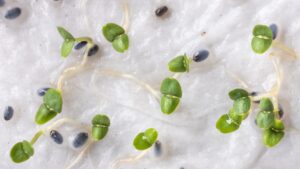
If you have seeds left from the last seasons, especially when they are more than two years old, you’ll want to check if they are still capable of germination. Some plants like parsnips and celery can be a bit finicky when it comes to germinating.
To find out if they’re still good, put some seeds between moist kitchen paper and observe for a few days if they germinate.
#3 Create new patches
January is a good time to build new patches. Don’t worry, you won’t have to dig up your garden (which would be especially tedious with frozen ground). My favourite method of building new patches only requires cardboard and good planting soil or compost. Peel off any plastic from the cardboard and lay it flat on the ground where you want to have the patch. Distribute well-rotted compost or planting soil about 10 – 15 cm (4 – 6 inches) on it. Done! If you want to learn more about this easy no-dig method, hop over to this article.
#4 Prepare your indoor growing station
Another garden task in January is cleaning your growing stations with hot water so that all pathogens and pests are killed before we start to sow.
Also, sterilize your growing soil by baking it at 150 °C (300 °F) for 30 minutes. This will kill for example fungus gnats that can be a real danger for seedlings.
If you don’t have any planting lights already, consider buying some. They’re a real game changer when it comes to indoor sowing as the natural light usually isn’t sufficient to help develop healthy plants.
#5 Seed-starting
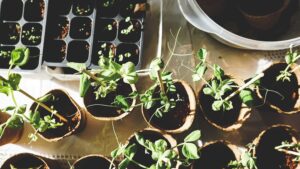
Although it may seem a bit early, you can already start to sow indoors. Some vegetables, for example chillies and peppers, are real sloths when it comes to growth. To give them enough time to become large enough to plant them out eventually, sow them indoors at the end of January. Cabbage, cauliflower, leeks and onions can also be sowed indoors at the end of the month. Wanna read more about what vegetables you can seed-start in January? Hop over here!
#6 Protect your plants

Whenever you’re out in winter, you’re happy for any frost protection you can get. The same goes for our plants: they are freezing. So, one of our garden tasks in January is covering them with frost protection fleece that not only protects them from the cold but also from drying winds.
Still got any root crops in the ground? Cover them with an extra layer of mulch to protect them from the freezing weather.
You can also use the branches of your Christmas tree to cover your root crops or herbs BUT ONLY if hasn’t been treated with pesticides! We don’t want that in our gardens, do we? So, do your garden – and yourself – a favour and make sure that your Christmas tree is organic before using it to cover your plants.
#7 Harvesting
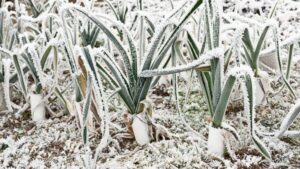
If you’ve ever harvested frozen vegetables in winter, you’ll know that for example lettuce becomes soft and slimy once it has thawed. The reason for that is that the plant you harvested can’t recover from the frost once it’s separated from its roots. Either harvest them when they are wrapped up in a fleece for example (which prevents freezing) or when it’s mild enough that they aren’t frozen.
#8 Watering
This may sound weird, but your plants can suffer from dryness even in winter, especially when it’s sunny and windy. This phenomenon is called frost draught.
When the ground is frozen, your plants can’t take up water but they still evaporate moisture through their leaves, especially on sunny and/or windy days.
To protect your plants from drying out, you have to water them. This is best done in the mornings when temperatures will still rise and the plants will get a chance to snatch up the water during the day.
#9 Pruning

January is still a good time to prune your fruit trees and berry shrubs. The best time to do that is while the plants are still dormant. If you haven’t done so earlier (ahm… yes: guilty), cut out any old growth from your fruit trees, raspberries, blackberries, blueberries, black and red currants and gooseberries to maintain their productivity in the upcoming season.
#10 Tool inventory and maintenance

Check if you’ve everything ready for the upcoming season:
Do you have enough frost protection fleece? Winter may go on a bit longer and you’ll want some spare fleece at hand, just in case.
Also, you’ll need pest protection nets for spring and summer. Companion planting, which means planting vegetables together that support and protect each other, is a great way to keep pests and diseases at bay. If you want to learn more about some foolproof pairs for your vegetable garden, hop over here. Yet, companion planting is no guarantee that there won’t be any pests. If you want to have your harvest for yourself then, and don’t want to share it with maggots, store up on protection nets.
Snails are also always a problem in my garden, especially last year when it was exceptionally wet. If you have the same problem, make sure you have enough barriers like snail collars and snail fences to keep them off your vegetables.
If you haven’t done it already, clean up your garden tools by scraping off the dirt and washing them thoroughly. Afterwards, it’s good to sharpen them, if necessary, and oil them. If something’s broken, repair it.
#11 Build what you need (and want)
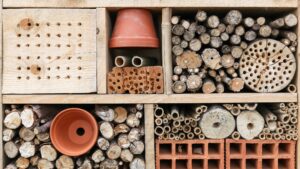
The garden is still dormant so why not head into your workshop and build what you’d like to have? Whether it be a trellis, raised beds, a scarecrow or an insect hotel, now is a good time to put your designs into reality.
#12 Support the animals

Our feathery friends will be grateful for food, so hang up bird feeders and fill them with appropriate food for wild birds.
If you have squirrels in your garden, you can also hang a squirrel feeder with balanced squirrel food into one of your trees. Install the feeder far from the house and at least 2 metres (6,5 feet)
Leave dead plant stems and fallen leaves on the ground as they offer hedgehogs and insects a great winter home. You can clean it all up later in spring when they’ve woken up from hibernation.
You see, even if almost nothing’s growing outside right now, there are still some garden tasks in January that we can do. And although the tasks seem different, they can be mostly summed up as: Preparation. No matter if it’s planning new patches and crops, maintaining and repairing tools, building new things or seed-starting indoors, these are all steps that lead to the next season’s garden. Have fun and enjoy the (relative) calm. We’ll soon be digging in the soil again!
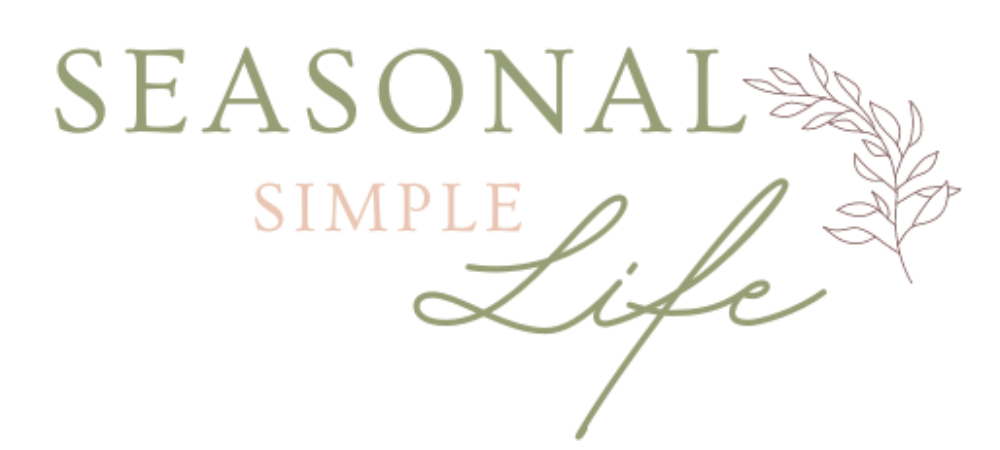
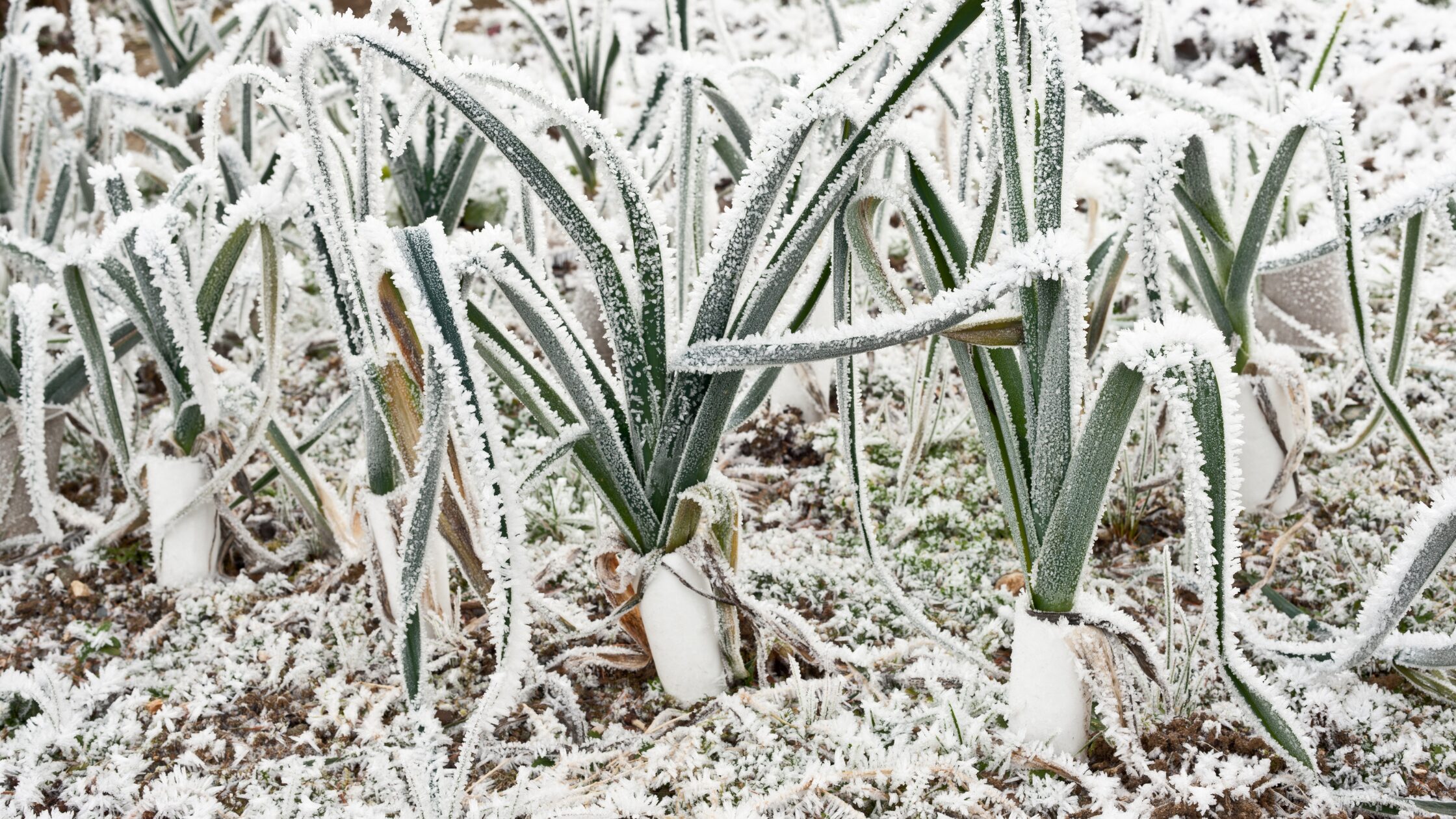
0 Comments